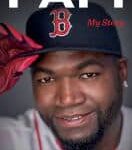Author Archives:Site Admin

2
JunWhen My Story Began
 This week, I returned from a professional conference in Hyannis. As you might guess, I spent four days surrounded by colleagues – librarians of all types from Massachusetts libraries, organizations and associations.
This week, I returned from a professional conference in Hyannis. As you might guess, I spent four days surrounded by colleagues – librarians of all types from Massachusetts libraries, organizations and associations.
Did we spend the time shushing each other? No, of course not! Instead, we introverted types arose early each morning and going to bed late, devoting each day to share our hopes and dreams for the present and future of libraries.
What drives librarians to reach well past our own comfort levels and beyond our own communities? We attempt to grow as professionals, to learn from our colleagues, and share with other librarians our own unique way of serving our Massachusetts communities in the best way we can.
For many of us, this burden of extroversion is an assault on our systems. It is entirely true that we are drawn to the field of librarianship by our love of information and our love of sharing it. Most of us are altruistic and generous with both our time and our resources. We are extremely enthusiastic about learning, researching and reading.
However, after several days spent in meetings and workshops and at dinners and lunches, we are what I call “interpersonally spent.” My husband knows enough to expect any conversation on the phone with me after a day I have spent this in this intensive extroversion. “I’m sorry,” I say. “I can’t put two words together to speak to you.” He knows I desperately need a break and that I crave a recharge. And he understands and expects nothing more than a “Goodnight please!”
I don’t think I became a librarian because I am an introvert. I didn’t, in fact, become a professional, mastered-degreed librarian until I was 51 years old. Growing older in this chosen profession, I’ve discovered why I was drawn to this field and how my own history unfolded.
I could begin the story in 1952 when I was born to a mother who cherished books. I own many of those of her childhood books where she carefully wrote her name, Carolyn Eunice Taft, in pen or pencil in 1937, 1938 and 1939. Throughout those years of her youth she received books from her eldest sister, Gladys. My mother cherished those volumes throughout her life, and then she passed them on to me. Through some of those precious books in the Children of All Lands series, I, as a child, also traveled the world with Shaun O’Day of Ireland, Little Philippe of Belgium, and Little Ann of Canada.
My story might have started in a classroom in Berkeley, California. My amazing teacher was responsible for one of the greatest impressions of my life when she built a library nook in the corner of our 4th grade classroom. Perhaps the wall were made of a large refrigerator box. More than likely, though, this library was built by her husband and constructed of wooden walls. I remember the thick piece of carpet on top of a linoleum floor, and a lovely cushion in the corner. My memories are so exquisitely vivid. I loved to retreat within those walls surrounded by several shelves of books, most likely borrowed from the school’s own library.
Perhaps my story began with my first library card at the public library. I grew up in a city where children walked blocks to school and church and where we rode our bicycles along the sidewalks where five library branches were within an afternoon’s travel. Parents rarely accompanied us; mothers were often home with younger siblings and we were considered old enough to be on our own. The influx of people from the San Francisco had caused Berkeley to split at the seams and four library branches had been built to accommodate them in the 30s. I rarely visited the imposing main branch in Berkeley. It was a Carnegie library built 20 years after the San Francisco earthquake. The branches were my haven.
My favorite was the lovely and cozy Claremont branch on the hills leading west to the Claremont Hotel. It was a favorite place to go after school. The North branch on The Alameda, just northwest of the downtown, was a great place to spend summer afternoons with a friend. We read, talked, and made dandelion chains on the grassy knolls surrounding the library.
My story might begin instead with my own personal library. It was made up of the Christmas and birthday gifts my mother gave me. She began with The Five Little Peppers and How They Grew in 1960 when I was young enough that very careless cursive, my youthful signature, graced the inside cover. My collection of these classics still have top billing on several shelves of my current library. They are joined by later books she gave me as a young adult, such as Gone with the Wind. As a young teen I never missed the opportunity to add Scholastic paperbacks to my collection – those books we chose from the newspaper-type flyer they passed out each month in school.
Perhaps it was when my high school library became a respite from the California sun and pollen; that was where I spent my physical education classes 1967-1970 when I could not be allowed on the baseball or archery fields for much of the year due to severe allergies to California grasses.
It goes without saying that my days and nights and weeks spent in my college library may have been where I truly learned to respect the treasures that are held within the stacks. I was at times a history, political science, English, and Russian studies major. I researched Civil War soldier Joshua Chamberlain (years before the movie Gettysburg was released) and studied mountains of Civil War annals on the upper floors and long hallways. I stacked volume after volume of the Reader’s Guide to Periodical Literature on tables and flagged entry after entry for research papers I’ve now forgotten I’d ever written.
My story also could begin with my own daughters. I volunteered in their elementary school library, stamping due dates and shelving endless piles of books. I stacked their desks at home high with so many books for their own projects that they learned to avoid asking me, their mother, for any help. Years later my youngest daughter was in college when she paid me the highest compliment I’ve ever received; she admitted that it was my particular annoying habit of indulging their every research whim that made her appreciate her own strength to research. There was, indeed, a method to my Mom’s madness.
My story certainly didn’t end there and it doesn’t end here. Yes, I finally, returned to graduate school at the end of the last century, partly as a means to support my new single self, but mainly to pursue my lifelong dream to spend as much time in a library as I could – sharing, educating, learning, and being among some of the smartest, committed, caring people I know – my colleagues, Massachusetts librarians.
Charlotte Canelli is the library director of the Morrill Memorial Library in Norwood, Massachusetts. Read Charlotte’s column in the June 1st issue of the Norwood Transcript & Bulletin.

25
MayYour Friend, the House Rabbit
 With Easter in the rearview mirror, now is a great time to talk about having a bunny in your life every day, not just once a year! After cats and dogs, rabbits vie with fish and birds for the position of third most popular pet in America, with as many as three million living with families across the country. In the last few decades, perception of rabbit ownership has changed considerably, from thinking about them as farm animals good for learning about breeding and responsibility to a long-term commitment as a family pet. My wife and I have been “rabbit people” for about ten years now and have come to love and understand much more about how smart, fun, and loveable bunnies can be.
With Easter in the rearview mirror, now is a great time to talk about having a bunny in your life every day, not just once a year! After cats and dogs, rabbits vie with fish and birds for the position of third most popular pet in America, with as many as three million living with families across the country. In the last few decades, perception of rabbit ownership has changed considerably, from thinking about them as farm animals good for learning about breeding and responsibility to a long-term commitment as a family pet. My wife and I have been “rabbit people” for about ten years now and have come to love and understand much more about how smart, fun, and loveable bunnies can be.
One of the first things that I learned was that pet rabbits are an entirely different species than the rabbits you see outside nibbling your lawn. Native rabbits are eastern cottontails (Sylvilagus floridanus) while domestic rabbits (Oryctolagus cuniculus) come from Europe and are the product of centuries of selective breeding for show and consumption. Just like your beloved pug dog or Persian cat, domestic rabbits really aren’t suited for living in the wild, especially through a New England winter!
One thing they do have in common is that they do, well, breed like rabbits! So just like with dogs and cats, it makes sense to get your pet bunny spayed or neutered. The procedure is very safe and affordable, and in addition to making sure you don’t end up with more bunnies than you planned on, it’s good for you pet’s health and behavior. Fixed pets of all kinds are much less likely to develop reproductive tumors and this is particularly true of rabbits – unspayed females have a 60% chance of developing potentially fatal uterine cancer. Spayed and neutered rabbits also are less inclined to mark their territory by spraying urine or to fight with other pets due to hormones.
Rabbits can be litter trained, just like cats, and can happily roam about your house and keep you company without making a mess. However, like dogs, rabbits can be inclined to chew on things, particularly furniture legs or electrical cords, so it’s important to make sure that any rooms they have access to are “rabbit proofed” for safety. While the older, farm-centered, model of keeping rabbits encouraged people to keep them in hutches, indoors or outdoors, this is not ideal for rabbits’ health or happiness. They are very social animals and will be most friendly if you interact with them throughout the day, not just visit them to deliver food and water.
Outdoor caging doesn’t just leave rabbits vulnerable to boredom and the weather, but also to predators like foxes or raccoons, who can break into a hutch, and to the possibility of infection. Fleas, ticks, and flies are a danger for any outdoor animal and can drastically shorten any pet’s life. Rabbit hutches also typically have wire mesh floors so that they can be cleaned easily – but this wire can cause horrible pain to rabbits’ feet, leading to sore and deformities. Farm rabbits, kept for show, breeding, or even meat, tend to live for only two to four years, whereas a rabbit kept indoors as a pet can live from seven to twelve years depending on their breed and care.
My wife and I joined the community of rabbit owners first as foster parents and then as foster “failures” when we ended up adopting one of our charges. Because of rabbits’ tendency to breed quickly and because of misunderstandings about the level of commitment needed to become a rabbit owner, many would-be pets end up in animal shelters and rescue organizations across the country. In addition to providing temporary homes for abandoned bunnies, these groups also help to educate the public about rabbits’ needs, promoting spay and neuter programs, dietary guidelines, and opposition to the stereotype that rabbits are “disposable” pets.
Rabbits typically eat a diet consisting mostly of grass hay, supplemented by fresh greens. Feeding them large quantities of pellets can lead to obesity and health problems, and, while bunnies do love treats like carrots or bananas, these have way more sugar than their digestive systems can handle and should only be fed sparingly. Rabbits are wonderful pets, but they need to be handled carefully and looked after just like any other member of your family!
The first rabbit that we adopted, Samatar, had long-term dental problems that needed regularly veterinary checkups. She had come from a failed rabbit farm, where animals were bred for meat and illness or injuries often went unaddressed. Many rabbit farms like this are launched without much planning, and due to lax regulations on care and housing, the rabbits in these situations can quickly become overcrowded, malnourished, and very sick. In a case last year, a farm in Westport had hundreds of animals, including dozens of rabbits, confiscated and many were already dead or needed to be euthanized. However, many other rabbits made a full recovery and after being socialized with people were adopted into loving homes.
Our two current rabbits, Tabitha and DJ Roomba, also came to us as animal rescues. Now, they love to hop and play with toys, and even sit on the couch and watch TV with us as we pet and groom them. We help out with the House Rabbit Network (www.rabbitnetwork.org) based here in Massachusetts to foster other rabbits and participate in outreach and education efforts. Bunnies can be great pets, but it’s important to learn as much as you can about any animal before they become a part of your family!
Jeff Hartman is the Senior Circulation Assistant, Paging Supervisor, and Graphics Designer at the Morrill Memorial Library. Read Jeff’s column in the May 25th issue of the Norwood Transcript & Bulletin.
What You Need to Know: Twitter & Tweeting
Twitter’s website is full of helpful information if you’re interested in learning more, but, in the meantime, here is how they talk about what they do:
What is Twitter?
Twitter is the place to find out about what’s happening in the world right now. Whether you’re interested in music, sports, politics, news, celebrities, or everyday moments—come to Twitter to see and join in on what’s happening now.
What do I use Twitter for?
While everyone experiences Twitter differently, here are a few areas that might interest you to help you get started.
- News and politics: Get the latest on local and global news, watch political events as they unfold, and take a part in communities and social movements.
- Sports: From the Olympics to the NFL draft, get real-time updates, see what the star players have to say, and connect with fans around the world.
- Pop culture: See what your favorite celebrities are up to by following them on Twitter and joining in on the conversation.
- Influencers: Find out what thought-leaders and experts in your industry are saying, and connect with creators, artists, and celebrities.
- Utility: Get commuter info and updates, receive disaster updates and support, and reach customer service agents without having to call.
What is a Tweet?
A Tweet may contain photos, videos, links and up to 140 characters of text.
Brand Smith, in his article on Mashable.com, explains, defines, and simplifies Twitter. He writes the following:
[Twitter] is a platform wherein users share their thoughts, news, information and jokes in 140 characters of text or less. Twitter makes global communication cheap and measurable. Profiles are (usually) public — anyone in the world can see what you write, unless you elect to make your profile private. Users “follow” each other in order to keep tabs on and converse with specific people.
On Twitter, following someone is not necessarily an admission of friendship, but nonetheless affords interaction and conversation — at least in short bursts.
The first step is to understand and master the vernacular. There are certain words and jargon native to Twitter that you may already have heard in passing. These terms and their abbreviations (in parentheses) are essential for understanding the network.
- Tweet: A 140-character message.
- Retweet (RT): Re-sharing or giving credit to someone else’s tweet.
- Feed: The stream of tweets you see on your homepage. It’s comprised of updates from users you follow.
- Handle: Your username.
- Mention (@): A way to reference another user by his username in a tweet (e.g. @mashable). Users are notified when @mentioned. It’s a way to conduct discussions with other users in a public realm.
- Direct Message (DM): A private, 140-character message between two people. You can decide whether to accept a Direct Message from any Twitter user, or only from users you are following.
You may only DM a user who follows you. - Hashtag (#): A way to denote a topic of conversation or participate in a larger linked discussion (e.g. #AmericanIdol, #Obama). A hashtag is a discovery tool that allows others to find your tweets, based on topics. You can also click on a hashtag to see all the tweets that mention it in real time — even from people you don’t follow.
Twitter has a great online glossary that you can refer back to, should you get mired in a vocab morass.
Read on for the Twitter basics, but remember that Twitter is an experience. The more you use it, the more enjoyable and resourceful it will become. We hope you stick with it, as it can pay dividends in great conversation and personal connections with people around the world.
Curious? Here are some articles or websites where you can learn more:
Twitter Glossary
Twitter for a general overview (Tweeting, retweeting, etc.)
Big Papi and the Library Ladies
 If you were lucky enough to come to the library on April 25th, you most assuredly did a double take when you saw the Retirement Rookie – or Big Papi shelving books in the stacks. You saw him shushing patrons, chatting it up with readers in our quiet Cushing Reading Room, or checking out books at the front desk. The adorable storytime in the Children’s Room was so much fun for the children, Big Papi, the parents, and onlookers.
If you were lucky enough to come to the library on April 25th, you most assuredly did a double take when you saw the Retirement Rookie – or Big Papi shelving books in the stacks. You saw him shushing patrons, chatting it up with readers in our quiet Cushing Reading Room, or checking out books at the front desk. The adorable storytime in the Children’s Room was so much fun for the children, Big Papi, the parents, and onlookers.
Big Papi (aka David Ortiz) retired from the Red Sox at the young age of 40 and now he apparently has time on his hands. In April, viewers online were asked by John Hancock Retirement to tweet ideas for how Big Papi could spend his free time.
Apparently, working in a library was one of those ideas. Ad agency Hill Holliday teamed up with David Ortiz a few months ago and the digital campaign culminated in a set of ads set in locales around Eastern Massachusetts.
That’s why you’ll see scenes of the Morrill Memorial Library in an exciting new John Hancock Retirement commercial that will go online in coming weeks. The library here in Norwood was evidently chosen for many reasons. One of them is obvious – our library still LOOKS like a library. Much of our 19th Century building was brought back to its original glory in the latest 2001 renovation. Our rich mahogany walls, moulding, and 14-foot columns, and our stained and leaded glass remind everyone of glorious libraries of the past. “What a beautiful place to read, sit and study,” people say.
David Ortiz is 6 foot 3 inches tall. It was obvious to all of us that library book carts aren’t built for tall men. Big Papi, bending over a very short cart, wound his way along the first floor pretending to look for the right place to shelve a book.
Of course, patrons and staff were a bit star struck. How often do you see a BIG sports star in our library? There was absolutely no mistaking the fact that something was happening. Huge film trucks were parked in staff parking at the rear of the library. Once inside the doors, you couldn’t miss the 30 film crew moving about the first and second floors. Large editing and viewing apparatus was tucked into every corner, and wires and cords snaked along every walkway.
There were many moments of shushing. Everyone knows that the library is a different place today and that we have a few spots that are reserved for quiet reading but when the cameras were rolling, we were asked to be absolutely silent.
Before the day filming began, we had been told that a New England Red Sox recently-retired player would be featured in the commercial. His/her name was withheld from us. That day, we were also asked not to post anything on social media.
Thankfully, that day many of us had the cameras on our phone to record the excitement. A few enterprising staff members ran to local Norwood sports stores for baseballs. Of course, a gracious Big Papi autographed them. Filming took just a bit under four hours before Mr. Ortiz was whisked out of the library. The crew spent several more hours closing up the library location and before we knew it, the day had been a memory for the library staff.
David Americo Ortiz Arias was born in late 1975 in the Dominican Republic and was raised there. He graduated from high school as a talented baseball AND basketball player. He attended local baseball games whenever he could of both Ramon and Pedro Martinez, both eventually Major League baseball players in the United States. Ortiz signed on with the Seattle Mariners in 1992, was traded to the Minnesota Twins in 1996, and signed with the Boston Red Sox (thanks to his relationship with Pedro) in 2003. He played baseball for 20 seasons before retiring at the age of 40 in 2016.
Ortiz lost his mother in a car accident in the Dominican Republic in 2002 when she was only 46. It’s well-known that Ortiz looks to the sky in memory and praise of his mother each time he hits a home run and steps on home plate and she is portrayed in a tattoo on his biceps. He is also well-known for his foundation, the David Ortiz Children’s Fund that supports children in Boston and the Dominican Republic. Sales of Vintage Papi, his charity wine label, raises money for the fund. He’s also a champion of UNICEF Kid Power.
After the Boston Marathon bombing in 2013, it was Ortiz who helped bring Boston together again. After all, Big Papi is a Bostonian. And an American. On June 11, 2008, Ortiz became a United States citizen at John F. Kennedy Library in Boston.
In 2008, David Ortiz and Tony Massarotti wrote Big Papi: My Story of Big Dreams and Big Hits. He had just broken the team’s record with 54 home runs in 2006 and in 2007 for the THIRD STRAIGHT YEAR he started the All-Star game. The Red Sox had broken the curse in 2004 after Ortiz was a team player and they went on to win again in 2007. David Ortiz’ story had not been fully told however – he had nearly a decade more to write about.
This week, Papi: My Story written by Ortiz and Michael Holley will be on library book shelves. By the time he retired in 2016, Ortiz was named an All-Star seven more times. The Red Sox went on to win the World Series one more time in 2014 with Ortiz behind the bat. Ortiz went on to hit the most home runs by any player in his final season – 38. He finished his career with 541 home runs and a .286 batting average. In 2015, Big Papi joined the ranks of three other great players in Red Sox history – Williams, Yastrzemski and Martinez. They were voted Franchise Four by Red Sox fans.
There’s no doubt that Ortiz’ reputation on the baseball field, for commitment to his family (his daughter sang the National Anthem during his final home opener at Fenway with his wife Tiffany and other two children on hand) and for his huge heart are all very real. The Morrill Memorial Library has always been Red Sox territory. We are thrilled that Big Papi joined us for the day; we’ll never forget his smiles and his amazing presence among the Library Ladies in Norwood. Big Papi is welcome anytime he wants to visit.
Charlotte Canelli is the library director of the Morrill Memorial Library in Norwood, Massachusetts. Read Charlotte’s column in the May 18th issue of the Norwood Transcript & Bulletin.

